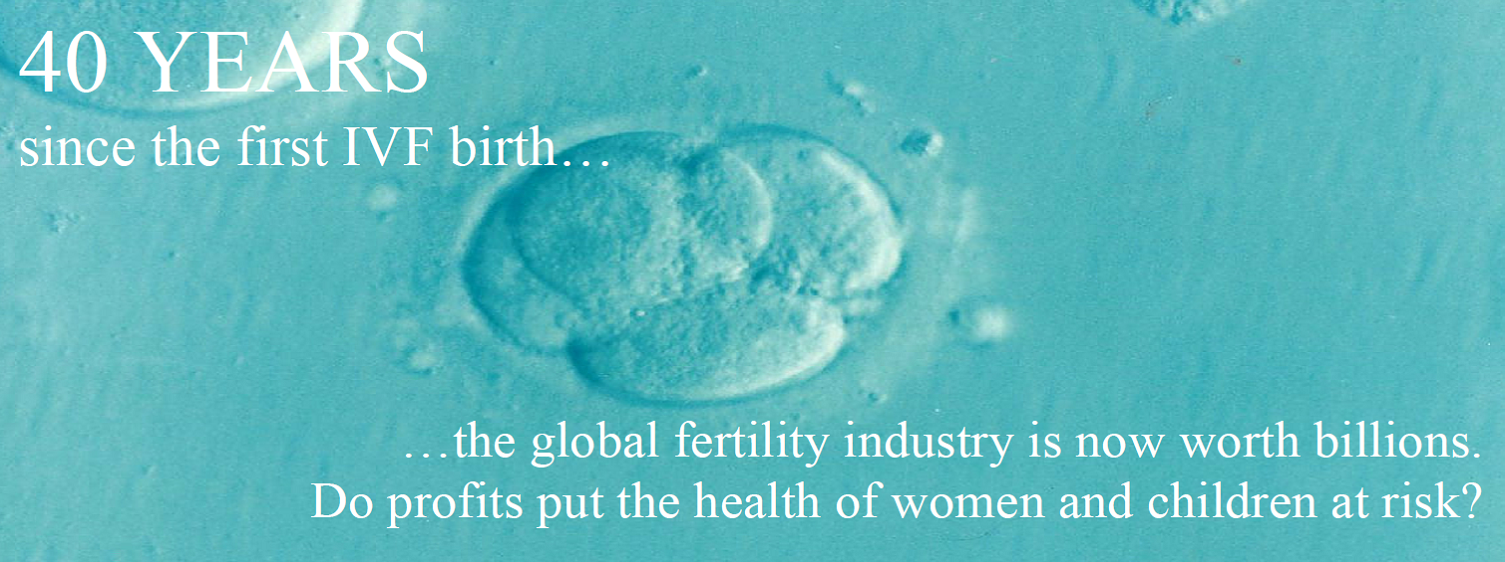40 Years of IVF: What’s Been Overlooked?

The first baby born as a result of in vitro fertilization (IVF) celebrates her 40th birthday on July 25. This is a landmark not only for Louise Brown but also for the millions of others whose lives have been impacted by assisted reproduction.
While there’s reason to celebrate, many challenging and sobering stories are waiting to be told. To provide some pointers toward these, the Center for Genetics and Society has prepared a two-page fact sheet on IVF, which can be accessed on the Center for Genetics and Society website here. We also draw your attention to this infographic on international commercial surrogacy developed by Our Bodies Ourselves.
The fact sheet begins with the growth of infertility treatment into a multi-billion dollar global industry. It touches on angles including
- IVF’s persistently high failure rates
- the under-studied but disturbing risks of egg retrieval and egg freezing
- inadequate oversight and accountability in many aspects of the assisted reproduction industry
- lack of access to assisted reproduction due to expense and/or discrimination against single and LGBTQ people
- concerns that genetic screening devalues and stigmatizes people living with disabilities
- stark power imbalances among participants in commercial surrogacy and egg “donation” arrangements
References are available online and on request.
The fact sheet was compiled in consultation with colleagues working in the fields of women’s health and wellness, reproductive rights and justice, and disability rights; and representing organizations founded by current and former egg providers and IVF patients. Those listed below are available for interviews.
- Marcy Darnovsky | Executive Director | Center for Genetics and Society | 510.665.7760 ext 305 | darnovsky@geneticsandsociety.org
- Pamela M. Tsigdinos | Co-Founder |ReproTech Truths |408.674.6997 | pamelatsigdinos@gmail.com
- Nourbese Flint | Policy Director and Manager of Reproductive Justice Programming | Black Women for Wellness | 323.420.6934 | nourbese@bwwla.com
- Raquel Cool | We Are Egg Donors | raquelcherylcool@gmail.com
- Wendy Kramer | Co-Founder and Director| Donor Siblings Registry | 303.258.0902| wendy@donorsiblingregistry.com
- Silvia Yee | Senior Staff Attorney | Disability Rights Education and Defense Fund | 510.644.2555 | syee@dredf.org
- Judy Norsigian | Board Chair and Executive Director Emeritus | Our Bodies Ourselves | 617.233.0062 I judynorsigian@gmail.com



